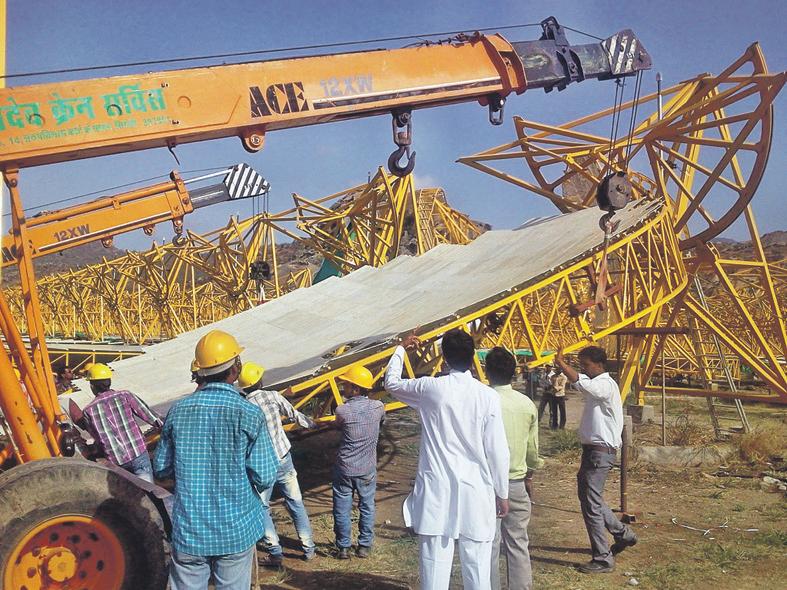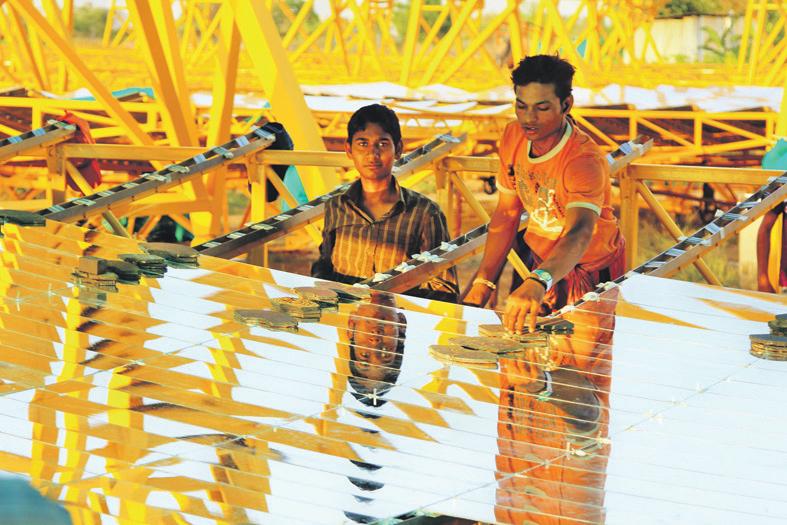
4 minute read
Harnessing the power of the sun
from 2013-10 Sydney (2)
by Indian Link
India One, a solar thermal plant aims at becoming a landmark in the future of Indian renewable energy
BY JYOTI SHANKAR
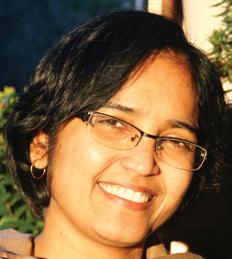
Many ancient cultures have worshipped the sun god. Whether it is the Egyptian Ra, Polynesian Maui, Greek or Roman Apollo or the Indian Surya, the sun has been the supreme deity in the hierarchy of gods. There are a number of temples dedicated to Surya in India, the most famous being the Konark Sun temple in Orissa, now a World Heritage Site. But today, channelling the power of the sun god has a new manifestation, and it is bigger than ever before. India One is a 1 MW solar thermal power plant project coming up at Abu Road in Rajasthan. Since 2010, Joaquim Pilz aka Golo to his friends and colleagues, has been coordinating the design and construction of this plant. Golo was in Sydney in October with a group of members from the environment initiative of the spiritual organisation of Brahmakumaris. He spoke to students and many other interested groups about the power of solar and why it makes sense to harness this energy.
Golo came to India about 25 years ago on his spiritual quest, and has been instrumental in the establishment of a number of very large scale solar cooking systems that now cook for tens of thousands of people every day, especially in temple complexes where wholesome food is often distributed freely to everyone.
When something seemed lacking in his life at Frankfurt in Germany, Golo was drawn to the spiritual teachings of the Brahmakumaris. He sees the India One project, as part of his personal journey. This research project initiated by the Department of Renewable Energy of the World Renewal Spiritual Trust (WRST), a sister organisation of the Brahmakumaris, is funded by the Ministry of New and Renewable Energy of the Government of India and the German Federal Ministry for the Environment, Nature Conservation and Nuclear Safety, along with a few other partners.

What is unique is that each of the 770 parabolic dishes needed for the array are manufactured inhouse and feature an innovative thermal storage for continuous night operation too. When completed, the plant will generate heat and power. Golo has initiated various innovative research projects that are focused towards rural adaption, and hopes that India One will be a landmark in the future of Indian renewable energy scenario.
The merits of using solar energy are well-known. In an energyhungry world, solar power is not only freely available in abundant quantities, but is also pollution free. The technology has been available for decades now, but its adoption has been slow and not far-reaching. A majority of the world’s electricity supply is still generated from fossil fuels such as coal, oil and natural gas, but the challenges facing these traditional sources are mounting, rising prices caused by depleting stocks, dependence on imports from a limited number of countries, and growing climate change impacts caused by power generation using fossil fuels.
Rajasthan has 290 days of glorious sunshine. Although there is variability in the amount and timing of sunlight over various days depending on the weather and seasons, a properly configured system can be designed to be highly reliable. The India One is a pilot project for large scale solar energy generation and if successful, the technology will be used in villages and small townships such as Shantivan in Mount Abu.
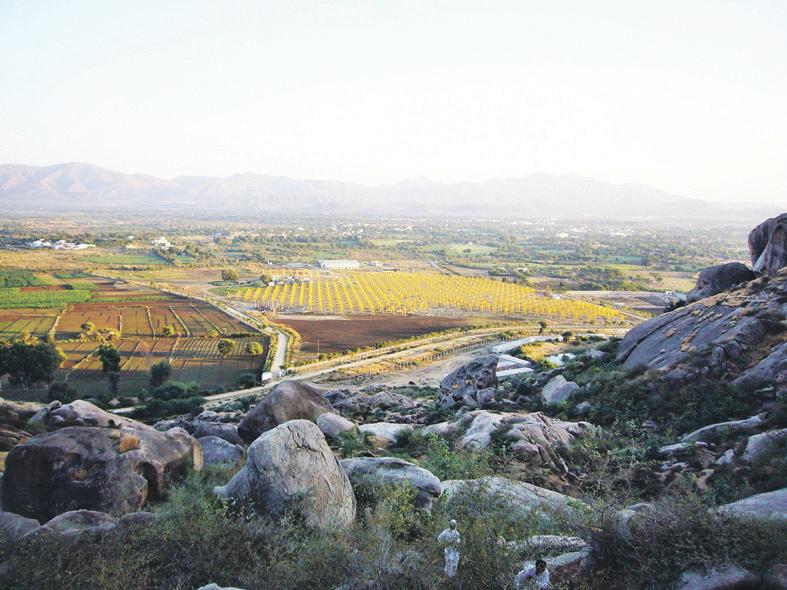
We see more houses with solar panels on rooftops in Australia, and in India the government has been promoting solar energy through its Aditya stores. The Solar Aditya shop at the Shantivan has distributed over 15,000 solar lanterns, 500 home lighting systems and 400 solar cooking boxes. But this is different to harnessing of large scale solar energy for heat and power that India One aims to achieve. Each 60 m2 parabolic dish will concentrate solar rays on to the cavity receivers positioned in front of each dish. This innovative receiver with heavy iron casting which provides excellent thermal storage is designed in-house. The thermal storage can be discharged on demand and its excellent insulation helps to avoid substantial energy losses at night or cloudy days. India One will be the first of its kind in the world in dish technology in direct steam generation mode, with full thermal storage for 16 hours of continuous operation for base load energy.
“The world is but a reflection of ourselves and if we experience ourselves as a positive being, we can radiate that energy and help to make changes in the world around us,” says Golo, explaining his belief. “I find that meditation helps me focus better and be patient”.
“Problems keep surfacing as the project progresses, but it is now about 50% complete. While nature is an obstacle sometimes (we often work in 45o C temperatures), and technical difficulties in finding cheaper solutions that can be adapted to Indian conditions can be an issue at other times, more than often it is the Indian bureaucracy that can stall the project,” he admits candidly.
Release of funding can be a slow process and the project team have to carry on with true grit, keeping the distant goal of a clean energy world in focus.
The environment initiative of the Brahmakumaris is based on five main principles: living with simplicity; buying compassionately; using economically; learning continuously; and sharing generously. These age-old values are seeing a resurgence as people have found that growth or materialism does not equate to happiness. The India One project is one step closer to a sustainable future for the 25,000 people living at the Shantivan campus, and will be a milestone for clean power generation without dependence on the grid in India. The local workers have been engaged in the construction and maintenance of the power plant, thus building capacity and expertise. It is hoped that the project can be replicated in many other places, and will offer a cost effective alternative to polluting fossil fuel-based power generation. Unfortunately today, as Ralph Nader, American political activist and lawyer put it, “The use of solar energy has not been opened up because the oil industry does not own the sun”. But projects like India One will change the world one day, slowly, silently and surely.
What is unique is that each of the 770 parabolic dishes needed for the array are manufactured in-house and feature an innovative thermal storage for continuous night operation too
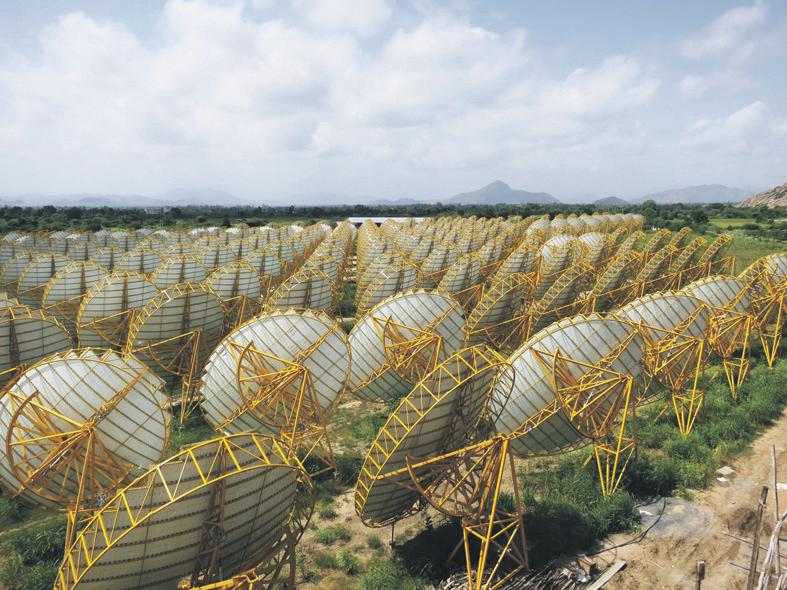
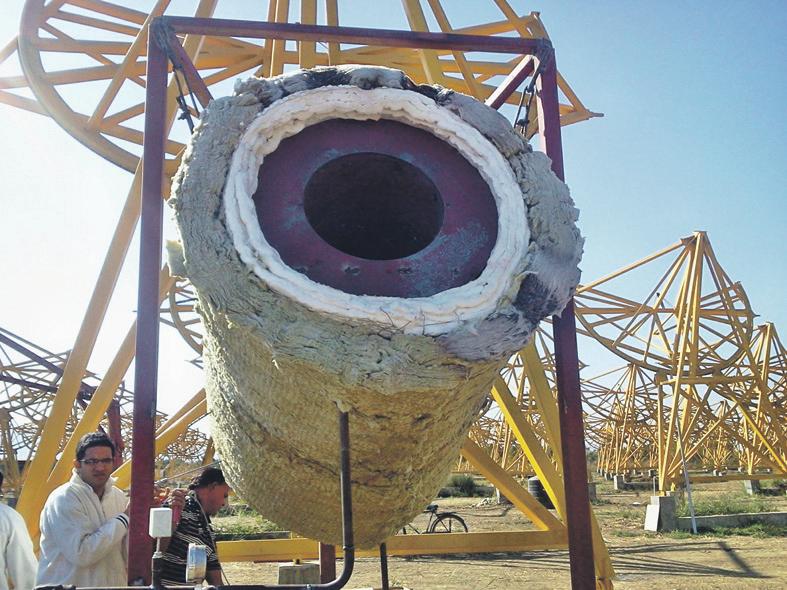

India One will be the first of its kind in the world in dish technology in direct steam generation mode, with full thermal storage for 16 hours of continuous operation for base load energy
